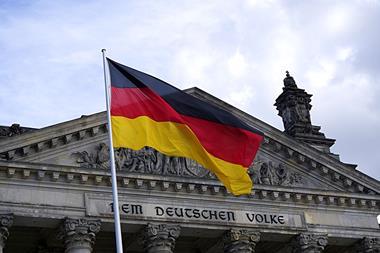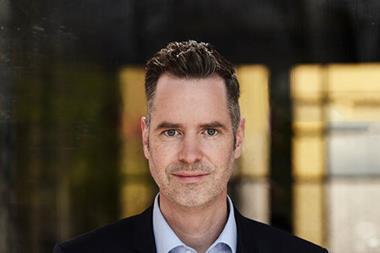The master-KAG
The prediction up to now has been that one-third, if not two-thirds, of all Spezialfonds mandates could be re-tendered was based mainly on the dominant theme of the past year, the ‘master-KAG’. Unfortunately there have not been any reliable investigations of the extent to which these predictions have so far come true. So it would also certainly been interesting within the framework of this investigation in addition to query the extent of outside advice or outside management of investment funds. But this has not been done, firstly because putting the question in this way would have broken the coverage of the familiar Kandlbinder studies and consequently prejudiced the outcome of the survey overall. Secondly, the BVI has already taken up this issue within the framework of its data gathering among the member companies. Because this is a new project, there are as yet no usable findings from this side. It only allows us to assume that certainly a good quarter of Spezialfonds mandates are not managed exclusively by the respective KAGs but either managed by external managers or advised by external advisers.
However, this quarter does not only include such Spezialfonds or segments of Spezialfonds that are externally advised or managed within the framework of a master-KAG concept. It also covers such cases where investors have appointed a specific adviser for their KAG or themselves make specific recommendations for buying and selling securities. If we assume that the provision of ‘master-KAGs’ is only be made by specific KAGs on a broad front, the market share of these KAGs is currently less than 10%. Even taken together with other master mandates from other KAGs the total share of this service in the market as a whole could so far hardly be more than 10%.
On the other hand, the master-KAG is still a relatively new topic, and its significance could once again increase sharply over the next 12 months for two reasons. Firstly, some companies have over the last year still been reluctant actively to offer them because the legal situation is still not absolutely settled. This uncertainty factor is set finally to disappear on 1 January 2004, when the new investment fund law expressly permits fund management to be outsourced. Secondly, for the investor a key obstacle to amalgamating their different Spezialfonds into a single Spezialfonds managed by a master-KAG is set to disappear, as according to the present draft of the law on the taxation of investments it will be possible for investors to merge investment funds without affecting their tax situation. Only when they subsequently dispose of their units to this amalgamated fund would investors’ undisclosed reserves be taxable. There is a good chance of this proposal being implemented, as there is little likelihood of tax deficits.
It is nevertheless uncertain whether all KAGs will market a master-KAG product. On the one hand, such a product assumes functional interfaces for the exchange of information and data with external advisers or managers, as the case may be. The cost of such interfaces is not exactly insignificant, and if investors only want to have a single report, this can subsequently be done much more cheaply (‘virtual master-KAG’). On the other hand, the legal burden of liability is now borne by the KAG. Whether the liability of the KAG to a Spezialfonds investor for purchasing a barred security, for instance, can be effectively excluded is as yet unclear. In the extreme case, an investor, or their appointed adviser or manager could purchase a specific security and then later claim compensation from the KAG on the grounds of infringement of the law or contractual purchase restrictions. In other respects the equity capital requirements are directed only at the Master-KAG, not at the adviser or external manager.
Outlook of further effects of the investment fund law: Increased number of investors permitted in one Spezialfonds
The first obvious change relevant to Spezialfonds is that the permitted number of investors in one Spezialfonds is to be increased from 10 to 30. Up to now it has been possible for more than 10 investors to participate in a Spezialfonds by setting up a partnership (Personengesellschaft) for this purpose. It was the Personengesellschaft itself rather than the individual partners who were counted as Spezialfonds investors. One disadvantage of this construction is, of course, that the Spezialfonds investment fund certificates could not be linked to the investor’s securities portfolio, but only to a securities portfolio set up for the Personengesellschaft. There is, of course, nothing wrong with increasing the permitted number of investors, especially as there is no such restriction applied to Spezialfonds in Luxembourg. One advantage of the higher number is that it makes it relatively easy for all investors to hold their interest in a Spezialfonds below the 10% limit, and consequently to utilise the corresponding facilities, for instance under the terms of Basle II or under the reporting regulations.
Tax-neutral merger of funds and licensing of umbrella funds
It is likely that an attempt will soon be made to amalgamate as many Spezialfonds as possible by exploiting the higher number of investors, but without materially changing anything. Such a procedure will become possible because the amalgamation of Spezialfonds will be expressly permitted as ‘mergers’ and the current ban on non-cash contributions will be lifted for this instance. And the merger will even be tax-free under the law on the taxation of investments. And, in the communal funds that then come into being, a separate class of units with an individual investment policy can be set up for each investor, ie, not just an individual distribution policy or fees structure, as has possible up to now. Whether this might give investors advantages within the regulatory framework based on the investment quota, however, remains uncertain, as where there are already unit classes with different investment policies, for instance in foreign umbrella funds, one unit class will generally be treated exactly like an independent fund.
The provisions do, however, open up some interesting additional possibilities. The Spezialfonds may have up to 30 different investors subdivided into segments with different external advisers or managers, and finally there can still be unit classes with different dividend policies. Moreover, the unit classes do not need to be in any way identical with the segments, and the investors are free to choose the unit classes they invest in. The structural possibilities are therefore so flexible that there is a potential risk of confusion if the constructions become too complex.
Abolition of fund types
The abolition of fund types also creates added flexibility. In particular, in future there will be no difference between money market funds (Geldmarktsfonds) securities funds (Wertpapierfonds) and funds of funds (Dachfonds). Where there is provision for this in the contract terms, the fund manager will be able to choose between investing the entire fund in equities, bonds or bank deposits/money market instruments, or even investment trust units. Whereas up to now a Spezialfonds has been able to invest a maximum 5% of its assets in units of Wertpapierfonds, in future it will be able to invest, for example, 10% of its assets in units of corporate bond funds (Unternehmensanleihen-Fonds) and a further 15% in units of one or more equity-based funds (Aktienfonds). This regulation will enable smaller Spezialfonds in particular to invest in an economically rational way in additional market segments.
Liberalisation of the use of
derivatives
The use of derivative instruments in normal investment funds will also be substantially liberalised. The third financial market promotion act introduced an overall limit of 100% of the net asset value to cover market risk, and this is increased to 200%. This means that in future Wertpapierfonds will be able to use the same leverage as Immoblien-Spezialfonds, only by using derivatives, naturally, and not through direct borrowing. At first sight, this facility seems to hold little interest for most Spezialfonds, as the investor’s risk-bearing capacity is frequently not sufficient to invest even a fraction of the fund assets in the equity market, let alone increase market exposure above the value of the fund by using derivatives. Nevertheless, the new regulation is also important for these funds, as for the first time it enables fund managers to make sensible use of interest rate futures to control the duration of the bond portfolio. The previous regulation stipulated that no interest rate futures could be purchased to extend the duration in the case of a fully invested bond fund (Rentenfonds), but this is precisely what will be permitted in future.
Abolition of the absurd taxation of futures transactions
One very welcome aspect in this regard is that the completely absurd regulations on the taxation of short-term futures transactions is finally to be abolished. Although this regulation, introduced in April 1999 by the law on tax relief allows profits from the sale of options to be ploughed back into the Sondervermögen tax-free, just as with profits from the sale of securities, in the case of an economically identical exercising of an option right with cash settlement, investors have to pay tax on the profit, as they do on interest income, in the same year. And if the fund manager hedges securities holdings with futures, the investor has to pay tax on any profits on these futures, as with interest income, in the same year. But if the fund manager sells the securities holdings rather than hedging them, which in economic terms is just the same apart from the higher transaction costs, the investor has to pay no tax at all. These examples alone show clearly that the planned abolition of the regulation is the one sensible move, and certainly a very welcome one. Observers are waiting tensely to see the new transitional arrangements for loss carryovers on these futures transactions.
Abolition of the tax discrimination against foreign funds
One major factor in deciding to set up Spezialfonds in Germany rather than other countries will be eliminated by the new law on the taxation of investment. Up to now, investors in foreign funds were at a disadvantage compared to those investing in a domestic fund if by way of registration for marketing or a stock exchange listing the optimum tax rules were used (known as ‘white funds’ (‘weiße Fonds’)). This was because they had to pay full tax on earnings from dividend-bearing securities, while investors in domestic funds were able to receive dividends and profits on the sale of equities free of tax, or, in the case of natural persons, came under the dividend share half-income procedure (Halbeinkünfteverfahren). This disadvantage will be abolished by the law on taxation of investments because there will now be only two tax regulations. One regulation will apply to all domestic and foreign funds that publish their tax bases (the ‘weiße Fonds’), and the other regulation to those funds that do not do this (the ‘black funds’, or ‘schwarze Fonds’). The taxation of weiße Fonds will then correspond to the current regulation applicable to domestic funds (apart from the taxation of futures transactions). The penal taxation of schwarze Fonds will be moderated (only 70% instead of 90% of capital appreciation, only 7% instead of 10% of the last redemption price as fictitious minimum yield).
There seems to be some doubt whether the abolition of the fiscal discrimination will now result in Spezialfonds being set up in larger numbers abroad, as at the same time as the fiscal discrimination against foreign funds are being abolished, so too are some of their present rightly proclaimed advantages, in that domestic funds are catching up in terms of investment possibilities and flexibility.
The Investment-Aktiengesellschaft mit variablem Kapital is a new product. The OEIC (open ended investment company) was launched in the UK some years ago, in order to be able to offer an easy-to-understand investment fund construction to stand alongside the legally rather complex unit trusts, but the German Investment-Aktiengesellschaften are being licensed mainly in order to make it simpler to set up hedge funds. The requisite capital merely comprises a minimum fund volume of E300,000. With regard to the tax treatment of the investor, there should be no difference from a Sondervermögen. The financial reporting is perhaps a little more costly, because apart from the usual company balance sheet a fund will be required to present full accounts, as is the case with a Sondervermögen. The success of the Investment-Aktiengesellschaft will ultimately be decided by the supervisory authority when it sets out in practical terms the specific requirements for managers.
Hedge funds, the Sondervermögen with added risks, are also new. According to the way these are conceived in the law on investment, these are Sondervermögen or Investment-Aktiengesellschaften that according to their investment conditions have no restrictions placed on their leverage and are subject only to an unspecified right to spread risk. Unlike normal funds, they may also invest in precious metals, commodities, etc, and trade in appropriate derivatives. There should on the one hand be hedge funds that may be set up only as Spezialfonds, and on the other the funds of hedge funds (Dach-Hedgefonds), that may be offered as Publikumsfonds. The Dach-Hedgefonds themselves may not pursue any hedge fund strategies themselves, but may only invest in the target hedge funds, that is the Spezialfonds.
There may however be some doubt as to whether these target hedge funds (Ziel-Hedgefonds) will become an important business field for the existing Spezialfonds-KAGs, for various reasons. Firstly, most KAGs would probably have to develop the requisite specialist know how, or, as seems more realistic, call on experienced group entities. That could be beneficial for the retail (Publikums-) KAGs or those specialised providers who have recourse to an Investment-Aktiengesellschaft. Secondly, the market potential for the familiar hedge fund strategies could ultimately be limited, as hedge funds thrive on market anomalies, and there are by no means boundless numbers of these.
Nevertheless, there are likely to be very many Spezial-Hedgefonds, as even existing Spezialfonds will be changing their contract terms to become hedge funds. The advantage lies in the fact that there will then be practically no more statutory limits applicable to investment, and it will be possible to implement any sort of strategy free of any restrictions. Naturally, such a conversion does have the associated disadvantage that the BaFin will then have virtually no starting points left for supervising Spezialfonds, but that is something that many investors will be happy to accept, if they can.
Finally, it is still worth noting that in future the Spezialfonds-KAGs will be able to offer free portfolio management, not just as an ancillary, but as a main activity. There would conceivably be KAGs which are devoted exclusively to free asset management. As has been the case up to now with only individual Publikumsfonds, KAGs will in future be able to have themselves issued with an EU ‘passport’, so that they will also be able to offer their services in other European countries free of obstruction under supervisory laws.
Concluding remark
For the classic Spezialfonds, therefore, a certain degree of consolidation has begun, as can be seen from the unchanged number of providers, the declining revenue, the shrinking number and the – albeit merely market-related – decline in fund volume. As the capital markets recover, however, the Spezialfonds branch will grow again. Moreover, the new investment law will give the Spezialfonds not just the systematically more correct designation as Spezial-Sondervermögen, but probably also an additional boost. But of course, more than on any law, the future of the Spezialfonds depends on the capital markets and on the correct investment decisions made by the Spezialfonds-KAGs.












No comments yet